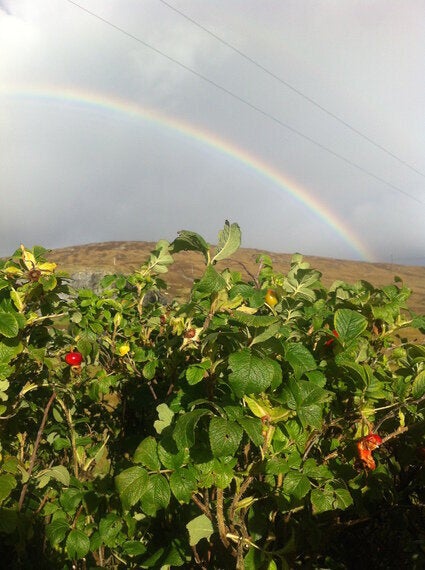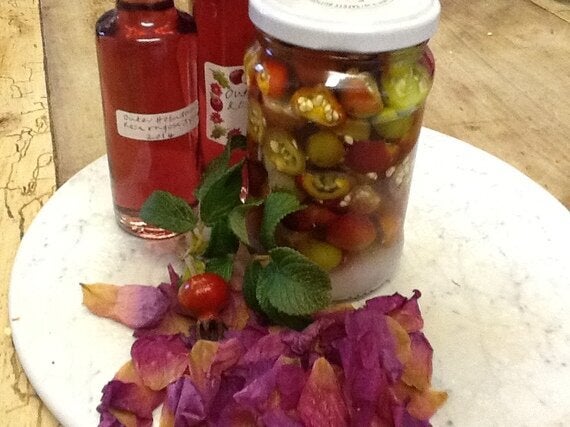
Rose hips on the Isle of South Uist in the Outer Hebrides
Those of a certain age may remember Delrosa syrup (and haliborange tablets), and some may recall gathering rose hips during and after the Second World War. This was a time when the import of citrus fruits was difficult and the wartime Government was anxious that the population was not getting enough Vitamin C. This promotional video will take you from competitive hedgerow gathering (where children could earn three old pence a pound) to sweet bottled deliciousness that at that time, it was acceptable to 'sprinkle on cereal or ice-cream'.
Some hip foraging tips.
•Biggest is easiest. Look for the non native Rosa rugosa hip. Fat hips probably means less thorns.
•Rose hips, which contain Vitamins A and B as well as C, freeze and can then be used at a later date. Out of season, the birds will appreciate one or two from your freezer stash too.
•Beware of the fine hairs. The hairs are used in itching powder. In Scotland the hips are aptly named Itchy Coos. I'll hold back from sharing that recipe with you because a recent experience confirms its potency, and it may fall in the wrong hands.
•If you spy any straggling Rosa rugosa petals, pop them in a bag in the freezer. In winter months the released petal scent (captured when frozen) is cheery. The pink dye from the petals is more vibrant after a freeze, should you make your own rose water, rose petal syrup or jam.
•In a pan, cover washed hips with water and simmer until soft. Drain through a jelly bag for clearest results or a sieve if you are in a hurry. Use the juice to make jellies and preserves (it works well with apples) or add twice as much sugar to juice to make rose hip syrup.
•If you are a novice forager check that you know your hips from your haws. Hips are orange and haws, smaller and redder.
In amongst my hip research, I discovered that the French call rose hips, grattee cul, which translate as arse scratch. I'm left wondering if somewhere, a pharmacy or joke store is doing big business in Itchy Coos. If you do experiment with Itchy coos, the leftover seeds are rather tasty too. These seeds will be snaffled by the birds, if you leave the hips on the autumn bushes for much longer. The white wild rose was worn by the Jacobites and is still worn by some on June 10th. Indeed, the 56 Scottish SNP MPs donned white roses for the State Opening of Parliament and Queen's Speech. On inspection however, their flowers appear to have come from from a florist. Indeed, the blossom of the wild little white rose of Scotland is fragile.
One of our favourite family recipes using rose hip juice, mixes it 50:50 with apple juice, adds sugar to taste and gelatine to set - child's play. It's a rich in Vitamin C jelly.
Rose Hip Gin (or if you prefer vodka) - 450g jar
I'm not certain of its Vitamin C content but it tastes delicious

150g rose hips, washed, topped, tailed and halved
70g Sugar
200ml inexpensive gin
Two thirds fill a sterile jam jar with rose hips and top it up with granulated sugar.
Fill the jar with gin or vodka and seal with a lid. Store in a dark, cool cupboard and shake well on occasional passing. The gin will change colour - to orange. Leave the hips to steep in the gin until you like the flavour (wait at least 3-4 weeks) and then strain the rose hip gin through muslin into a sterile bottle. This can be a hip-flask special, served as a digestif, drizzled over ice cream or even added to trifle.